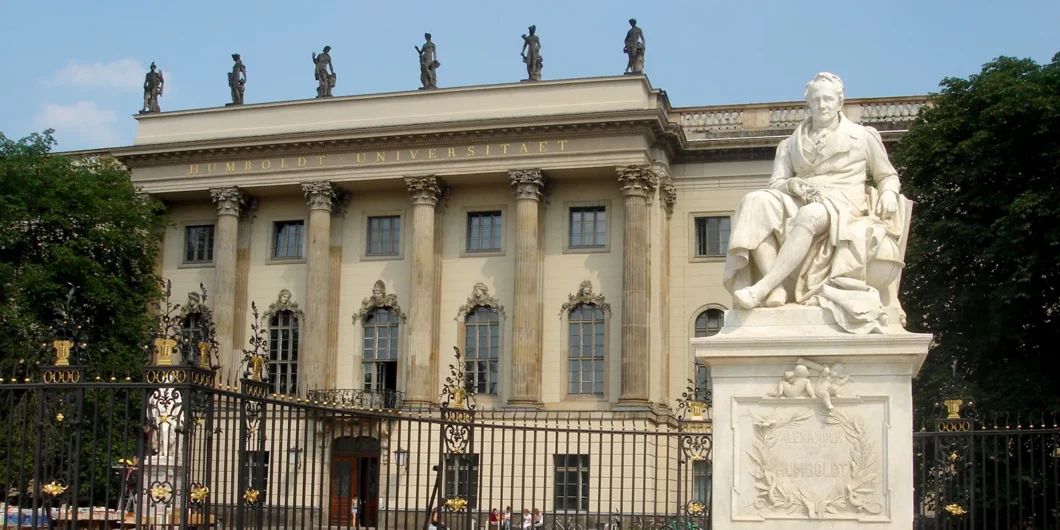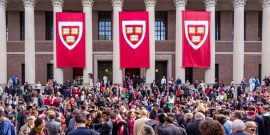Our efforts must focus on depoliticizing higher education.
The German Invasion in Social Science
A pernicious ideology has captured America’s institutions of higher learning, especially its most prestigious universities. The ideas born in those universities percolated into politics. They captured media, the unofficial mouthpiece of our university-educated governing classes. The ideology upended what appeared to be otherwise good-enough institutions that shepherded the country through a bloody war. Now these hostile, foreign ideas seem regnant though the familiar institutions look the same.
While Jeffrey E. Paul’s Winning America’s Second Civil War seems ripped from today’s headlines, it concerns how the spirit of German philosophy conquered America’s universities at the end of the 1800s. Progressive philosophy did not emerge full-grown from the head of Woodrow Wilson. It was imported as American social scientists and educational reformers went to Prussia and Germany and institutionalized its ways in America.
Paul, a research professor at the Social Philosophy and Policy Center at West Virginia University, delivers the receipts about the German influence on American universities, especially in areas of government and economics. And then he traces the specific elements of that influence to pathologies of American government today. Paul’s is a modified German invasion thesis, where foreign—specifically German—ideas have corrupted American culture. It’s just that the invasion happened nearly a century earlier than when the Frankfurt school rose to prominence in America.
The University of Berlin—the German flagship, but not the oldest university—was founded in 1807. Wilhelm von Humboldt was the civil servant most directly responsible for its creation. His public memo “On Germany’s Educational System” envisioned a university based on the centrality of research to teaching and academic freedom so as to achieve Wissenschaft (scientific knowledge). “Higher academic institutions are the pinnacle of a nation’s moral culture,” von Humboldt began his memo, and their calling was “to pursue knowledge in the broadest and deepest sense of the word … as the autonomous, self-arranging material of intellectual and ethical formation.” Bold words. In practice, this meant that Berlin was devoted to research infused teaching mostly on the state’s dime. Talent flooded in chemistry, biology, history, philosophy, and theology.
Americans and others were intrigued. American enthusiasts like George Ticknor visited German universities and reported on their glories to Thomas Jefferson as the former president was writing his proposal for the University of Virginia. Yet if some Americans were bewitched by the German universities’ promise to conquer nature, American schools were generally happy with their classical collegiate model, requiring Latin and Greek for admission and having a mostly prescribed curriculum. Technological advancements could happen outside the academy. As the famous Yale Report (1828), defending the old collegiate model, held, “We hope at least, that this college may be spared the mortification of a ludicrous attempt to imitate them [i.e., German universities].” Only 25 colleges were charted in America between 1630 and 1800, and another 44 were charted before 1830. And the vast majority of American college presidents before were graduates of either Yale or the College of New Jersey (i.e., Princeton), its imitator.
Yet 175 colleges and universities were chartered between 1860 and 1870, and, as Paul shows, the general attitude toward the German university at that time reflected none of the do-it-our-way cussedness found in the Yale Report. The astounding expansion in higher education (abetted by the Morrill Land Grant Act of 1862) created a market for the importing the German research university.
Paul does not object in principle to this German import, which allowed for New Thinking and greater natural science research. “The transformation of American higher education in the last quarter of the 19th century,” Paul writes, “provided a foundation for remarkable achievements in the natural sciences, engineering, and medicine in the next century.” The German invasion in social sciences was not so happy. “In what were called the social sciences and some of the humanities, the record was, at best, ambiguous.” The burden of Paul’s book is to show (1) that there was a straight line from German social science to progressive political philosophy and then progressive political practice and (2) that the effects were not just “ambiguous” but lent themselves to the emergence of an oligarchic, and perhaps a tyrannical, form of government.
What did this German-informed university look like? It divided the university project among academic departments. Its purveyors had special advanced degrees. It was based on expertise in sciences, rather than in general or ancient knowledge. It was mostly state-funded and state-controlled. The research university would sit at the apex of a burgeoning state K-12 systems, so that the K-12 public system could, in a sense, dictate admission requirements and curriculum to the university (i.e., eventually no Greek or Latin and more general and lower admission requirements). Education would be professionalized and regularized: the Association of American Universities was formed in 1900; the Association of American University Professors in 1915; and accreditation processes linking public schools to research universities arose at the same time.
Within this system arose a distinctly German way of thinking about government and economics that eventually spread to the highest levels of American political life. Paul’s is a “boy-goes-to-Germany, boy-comes-back-to-America-with-a-German-accent” story centered around taxation and the establishment of the administrative state.
Winning contains delightful sleuthing on how the social science fields came to America from Germany.
Paul relays the story through case studies of Columbia University and Johns Hopkins University. At Columbia, John William Burgess established the School of Political Science, the nation’s first doctoral program in political science, history, and economics. He received his doctorate at Berlin. He studied under German teachers like Theodor Mommsen and Heinrich von Treitschke, both of whom rejected natural rights philosophy for a view that society generated rights and who argued for an evolutionary understanding of moral principles. Among the first students at Columbia was Edwin Robert Anderson (PhD at Columbia 1885), who would be the architect of the Sixteenth Amendment, which established the national income tax. The national income tax was based on a rejection of natural rights philosophy, which argues that taxation should be related to the actual benefit that a taxpayer receives from government. The new scheme is based simply on the most pragmatic way to fund the government’s increasing functions. The result is “taxation without limitation,” as Paul writes. Out of Columbia also came the most important defenses of the administrative state, from Frank Goodnow, who was a Burgess student and who was also trained at Berlin.
Much the same story happened at Hopkins, a university established de novo in 1876, the year Reconstruction ended. Here three faculty members, including Richard T. Ely, helped disseminate German philosophy throughout the country and eventually into government. Hopkins trained John Dewey, and Woodrow Wilson, and those who eventually brought progressivism to University of Wisconsin and to Robert LaFollette’s Wisconsin. Ely went to Madison to establish a new School of Economics, Political Science, and History and he brought his students John R. Commons and Edward Alsworth Ross with him. Soon they were helping to staff the government. One-sixth of Wisconsin faculty served on government commissions. One devotee wrote, just as World War I was to break out: “Wisconsin is doing for America what Germany is doing for the world.”
Nor were they content simply on winning the battle of ideas. Affiliated economists also orchestrated purges of natural rights theorists and classical liberal economists, as Paul shows. They established professional organizations and academic journals whose missions, in effect, ruled out publishing economists associated with William Graham Sumner, the Yale economist. History PhD’s would learn to historicize the principles of the American Founding, essentially arguing that they were good for a backward country but not for an advanced, complex modern country, as Paul shows through the work of Charles Beard (PhD, Columbia).
From these beginnings, the progressive project spread from universities to governments slowly and surely. Unlike many “German invasion” theorists who approach the subject from the history of political thought, Paul focuses partly on tax policy, where he shows the slow growth of the manipulative, complex income tax and corporate tax systems. Administrative government gets its way through tax breaks here, exemptions there, and tax burdens to disfavored industries. The Green energy field—the ultimate progressive and German policy—illuminates the central power of tax policy.
Winning contains delightful sleuthing on how the social science fields came to America from Germany. It also raises crucial questions. The German temptation was there before the 1880s, but Americans had earlier rejected both the German research university and German historicism. Some voices like Cornell University’s Herbert Tuttle manned the beaches against the German invasion while it was happening. What was different about the America of the 1880s from the America two generations earlier? Certainly, American elites of the 1880s and beyond were more open to embracing Hegelian history, Darwinian materialism, and social scientific justifications for American institutions than before. But that, in a sense, merely begs the question: Why were they more open? Perhaps this openness is part of the American openness to conquer nature and therefore is implicit in the very promise of America.
In any event, Paul provides an indispensable genealogy of America’s progressive intellectual establishment, which gave us the progressive income tax and the administrative state. Both together, as he says, allowed a new oligarchy to emerge through collective ownership of the means of production and consumption.



